SYDNEY - AUSTRALIA
including the Founding of Sydney with the arrival of the
FIRST FLEET OF TRANSPORED CONVICTS 1788,
sinking and subsequent raising of the Orient Steam Navigation Company's
5,524 ton, S.S. Austral opposite Circular Quay11 November 1892.
GEORGE BULLOUGH - GRAND WORLD TOUR 1892-1895.
Article 16 of 28 * Time of visit: May 1893.
Including photographs from Grand Tour Album VII in Kinloch Castle Library.
The twenty photograph albums depicting George Bullough's World Tour 1892-1895.
*
Article sixteen continues
the description of the
1892-1895 world tour made by twenty-three year old George
Bullough, (later Sir
George, Baronet of Kinloch Castle, Isle of Rum, Scotland)
and his travelling companion, Robert Mitchell, published
in a series of twenty-eight articles by Mitchell in the Accrington
Gazette in August, 1896.
A full list of
references and acknowledgments can be found at the end of this paper.
for this paper, I have quoted as written at the time.
<>*<>*<>*<>*<>*<>*<>*<>*<>*<>*<>*<> + <>*<>*<>*<>*<>*<>*<>*<>*<>*<>*<>*<>
<>*<>*<>*<>*<>*<> + <>*<>*<>*<>*<>*<>
<>*<>*<>*<>*<>*<>*<>*<>*<>*<>*<>*<> + <>*<>*<>*<>*<>*<>*<>*<>*<>*<>*<>*<>
The First Fleet
comprised the 612 ton,
THE FIRST FLEET - FOUNDING OF SYDNEY.
 |
| Convict
Ship Alexander, built 1783. by Frank Allen First Fleet Fellowship Victoria Inc. |
twenty gun frigate HMS Sirius as
flagship, named after the southern star; (converted from the 1780 built merchantman Berwick); the
twenty-eight year old 168 ton Royal Navy armed tender, HMS Supply, carrying four small 3-lb. cannon, and four 12-lb. carronades; three store ships: the 351 ton Golden Grove, built 1780; 375 ton Borrowdale built 1785; and the 378 ton Fishburn, built 1780; plus six convict transports: the 452 ton Alexander, built 1783; 429 ton Scarborough, built 1782; 333 ton Lady Penrhyn, built 1786; 350 ton Prince of Wales, built 1786; 276 ton Friendship, built 1784; and the 345 ton Charlotte, built 1784.
NOTE: All accounts vary. Tonnages from First Fleet Victoria Inc.
NOTE: All accounts vary. Tonnages from First Fleet Victoria Inc.
 |
His Majesties Ships: Sirius, Prince of Wales, Fishburn, Golden Grove, Alexander, Charlotte, Scarboro'(ugh), Lady Penrhyn, Friendship, Borrowdale
and the armed brigantine, Supply.
HMS Scarborough was the only ship from the First Fleet to sail with the Second Fleet, the others being, The Guardian, Justinian, The Lady Juliana, Neptune and Surprize.
Already vested
with complete authority over the new colony, Captain Phillip,
was appointed
Governor by King George III on the 7th of February, 1788,
a post he held
for almost five years.
The Governor of
New South Wales at the time of Bullough and Mitchell’s visit was
The Biographical
Dictionary of the First Fleet records 1,420 persons embarked,
with 1,336
disembarking at Port Jackson of which 600 were male and 250 female prisoners.
However, both
deaths and births occurred during the 15,000 mile, 256 day passage via
Tenerife,
Rio de Janeiro and the Cape of Good Hope to Sydney Cove, all eleven ships
arriving safely within two days of each other on the 24th of January 1788.
Uncertainty there may be over how many persons embarked or disembarked,
but the First Fleet brought unseen passengers which were to have a decimating effect;
tuberculosis, influenza, measles, whooping cough and the common cold;
but none more so than variola major, smallpox, which within a year was responsible
for the deaths of innumerable Indigenous people in the newly settled colony .
arriving safely within two days of each other on the 24th of January 1788.
Uncertainty there may be over how many persons embarked or disembarked,
but the First Fleet brought unseen passengers which were to have a decimating effect;
tuberculosis, influenza, measles, whooping cough and the common cold;
but none more so than variola major, smallpox, which within a year was responsible
for the deaths of innumerable Indigenous people in the newly settled colony .
* All
accounts and numbers vary. Some claim a total of 1,484 embarked at Portsmouth.
Numbers According to the Fellowship of First Fleeters:
Category
|
Embarked
|
Born on
Voyage |
Died or
left Voyage |
Landed at
Sydney Cove |
Officials & Passengers
|
15
|
1
|
14
|
|
Marines
|
247
|
2
|
245
|
|
Marines' Wives
|
32
|
1
|
31
|
|
Marines' Children
|
14
|
14
|
||
Marines' Children - Born
|
10
|
1
|
9
|
|
Ship's crew
|
334
|
17
|
317
|
|
Convicts
|
775
|
43
|
732
|
|
Convicts' Children - Embarked
|
14
|
3
|
11
|
|
Convicts' Children - Born
|
12
|
1
|
11
|
|
Totals
|
1431
|
22
|
69
|
1384
|
Fellowship of First Fleeters - Articles and Facts Website. Woolloomooloo, Sydney
The youngest
transported with the First Fleet was thirteen year old chimney sweep John Hudson sentenced at the
Old Bailey on the 10th of December 1783, (when he was nine years old), to seven years transportation for
larceny - theft of apparel worth seventeen shillings and a pistol valued at five shillings, he was initially held in London’s Newgate Prison.
At the end of March 1784 he was transferred to the transport Mercury destined for America, but following a mutiny on board he was moved to a jail in Exeter. At the end of June, now aged ten, he was sent to the Plymouth based prison hulk Dunkirk.
On the 5th of March 1787 John was one of eighty male
prisoners transferred to the 276 ton convict transport Friendship
which sailed with the First Fleet to Australia on the 13th of May 1787, the outcome of the American War of Independence having
put an end to America as the destination for the “wretched inmates flushed from the overcrowded jails of England”.
Twenty-six months after later, the First Fleet Fellowship archive records : “John departed Port Jackson on the 4th of March 1790 for Norfolk Island aboard HMS Sirius.”
At the end of March 1784 he was transferred to the transport Mercury destined for America, but following a mutiny on board he was moved to a jail in Exeter. At the end of June, now aged ten, he was sent to the Plymouth based prison hulk Dunkirk.
On the 5th of March 1787 John was one of eighty male
prisoners transferred to the 276 ton convict transport Friendship
which sailed with the First Fleet to Australia on the 13th of May 1787, the outcome of the American War of Independence having
put an end to America as the destination for the “wretched inmates flushed from the overcrowded jails of England”.
Twenty-six months after later, the First Fleet Fellowship archive records : “John departed Port Jackson on the 4th of March 1790 for Norfolk Island aboard HMS Sirius.”
(Fifteen days later Sirius was wrecked while landing supplies at Norfolk Island.)
Colonisation
of Norfolk Island, 1,136 nautical miles due east of Australia’s east coast, began in March 1788, its fourteen square miles soon earning the sobriquet, “Hell in Paradise.” Convict life must indeed have been tough and
restrictive for the Fellowship concludes, “one year later, on the 15th
of February 1791 (John not yet
sixteen) received 50 lashes for being out of his hut after nine o’clock.”
The eldest transported was 75 year old Elizabeth Beckford, described as a servant, sentenced at the Old Bailey on the 10th of January 1787 to seven years for Larceny - stealing a 12-lb. Gloucester cheese - value four shillings; she died of dropsy sixty days into the voyage on the 12th of July 1787 on-board Lady Penrhyn.
Brother and sister, twenty year old George and 15 year old Elizabeth Youngson, a laundress, were sentenced at Lancaster on the 26th of March 1787 to death for burglary after admitting forcibly entering a silk warehouse in the town at 3am. on the 15th of September 1786 and stealing “41 shillings in silver and six shillings and nine-pence in copper.”
Three weeks
later their sentence was reduced to transportation for life.
They arrived in
Australia on-board the Prince of Wales and were sent to Norfolk Island.
On the 6th
of May 1798 Elizabeth, now 26 years old, married a fellow convict,
33 year old
Abraham Lee at St. Phillip’s Anglican Church, Sydney,
a wattle and daub
construction built in 1793.
Aged twenty-five, Lee, was one of 218 male convicts - out of 254 who boarded in England - who finally arrived in Australia with the Second Fleet* on the 26th of June 1790 on-board the 394 ton, armed, three deck converted merchantman Surprize, described as a “wet ship … an unsuitable vessel for so long a voyage … the convicts (being) considerably above their waists in water”, according to the commander of the guards. Elizabeth Lee, (née Youngson), died in Sydney in July 1854 at the age of eighty-two.
Between the
First Fleet of 1788 and the arrival of the last in January 1868, some 164,000 men,
women and children had been transported to Australia.
* The Second Fleet
was a Government charter from London based Camden, Calvert & King who “contracted
to transport, clothe and feed the convicts for a flat fee of
17 pounds 7
shillings and 6 pence per head, whether they landed alive or not.”
NOTE: £17:7:6d. in 1778 is equivalent to approx. £3,000 in 2022*
* United Kingdom Inflation Calculator - £100 in 1776 = £17,819 in 2022
* United Kingdom Inflation Calculator - £100 in 1776 = £17,819 in 2022
Camden, Calvert
& King were involved in whaling and ran merchant vessels to the East and
West Indies. Until it was abolished in 1807
they were the largest company in
London involved in the slave trade,
this know-how they put to use
transporting English convicts first to America and later, following conclusion of the American Revolutionary War against British rule 1775,
to the opening of penal colonies in Australasia.
THE SECOND FLEET
First ship, Lady Juliana, departed 1789.
 |
GEORGE BULLOUGH AND ROBERT MITCHELL TOOK THE ORIENT COMPANY'S STEAMSHIP AUSTRAL FOR THEIR JOURNEY FROM MELBOURNE TO SYDNEY
A DISTANCE OF 582 NAUTICAL MILES (670 LAND MILES) |
 |
| SS Austral with coaling tender Woonona (right) alongside. ILLUSTRATED NOTES RESEARCHED AND WRITTEN BY GEORGE W. RANDALL ON THE BUILDING, SINKING AND RESURRECTION OF AUSTRAL ARE AT THE END OF THIS BLOG. See also: Art Treasures of Kinloch Castle |
<>*<>*<>*<>*<>*<>*<>*<>*<>*<>*<>*<> * <>*<>*<>*<>*<>*<>*<>*<>*<>*<>*<>*<>
<> <><><><><><><><><><><> * * <><><><><><><><><><><> <>
FIRST FLEETERS
THE BUILDING OF SYDNEY
First Fleet
convicts possessed many skills. One of note, and essential to the establishment
of the new Colony, was brick layer James Bloodsworth (1759-1804),
convicted of a “felony” in April 1785 in London. Bloodsworth was born on
the 7th of May 1759 at Kingston-upon-Thames and
arrived in Australia on-board the transport, Charlotte.
There being no builders or architects in the fleet, twenty-eight year old James was appointed “Superintendent of Builders in the Employ of the Government” with a government salary of £50.
 |
| Sarah Bellamy Memorial Plaque in her home village, Belbroughton, Worcestershire, England. |
For his services
James was emancipated in December 1791 and made superintendent over all the brick-makers and bricklayers. A few months later he was offered rehabilitation back to England but he refused. In March 1802 he was elected Sergeant
of the Sydney Loyal Association.
At this time James was farming his land grant of twenty acres at Petersham, west of Sydney, later increasing his holding to 245 acres.
Sadly, on the 21st of March 1804, aged only forty-four, two months after contracting a severe cold, which rapidly turned to pneumonia James Bloodsworth died, leaving Sarah with four surviving children, two sons and two daughters, the youngest only one week old.
As the first builder of note in the Colony, his
“exemplary conduct”, and “the integrity with which he uninterruptedly
discharged the duties of Public Trust during so long a period, His Excellency, (Governor Captain Philip Gidley King), was pleased to order the funeral should be provided at Public Expense and to
show other marks of attention to so good a Servant of the Crown.” The Sydney Loyal Association escorted the
Sarah died on the 24th of February 1843 at Lane Cove, North Shore, Sydney.
<> <><><><><><><><><><><> * * * <><><><><><><><><><><> <>
<> <><><><><><><><><><><> * * * <><><><><><><><><><><> <>
<> <><><><><><><><><><><> * * <><><><><><><><><><><> <>
 |
| SYDNEY - FROM MAN O' WAR STAIRS Album VII * Image 18 * Edited from size 8 x 6 inches * Original by C. Bayliss 364
George W. Randall Research and Photographic Archive
Maritime Quest -Aerial photograph Peter F.
Williams
Dating from the
governorship of Lachlan Mcquarrie, 1810-1821, the masonry pier projects dog-leg to
enclose a sheltered landing with a flight of stone steps into the water.
Located close by
today’s Sydney Opera House the steps
allowed landing and embarkation for men of British and Australian Man O’War vessels at anchor in the bay for over 150 years.
The steps were
restored in 1973.
A plaque erected
by The Naval Association of Australia on the 30th of January
1983 records:
“From These
Steps 2,215 Officers And Sailors Of The Royal Australian Navy Left To
Serve Their Country In The Great War 1914-1918, The Second World War 1939-1945,
Korea, Malaya, And Vietnam, Never To Return To Enjoy The Fruits Of Their
Labours In Their Native Land.
Ye Who Tread
Their Footsteps, Remember Their Glory.”
<> <><><><><><><><><><><> * * <><><><><><><><><><><> <>
The original
photographer, Charles Bayliss, 1850-1897, was born near Ipswich, Suffolk, England and moved to
Melbourne, Australia, at the age of four with his parents in 1854.
Charles was sixteen when travelling photographer thirty-six year old Henry Beaufoy Merlin called at their house selling pictures from his caravan. So intrigued by this new technology Mr. Merlin offered Charles a job as an apprentice, later becoming his assistant. Together they toured and photographed Victoria and New South Wales at a time of rapid development and change. Their images, many depicting hardships faced by prospectors during the Australian Gold Rush, are proof that a single picture can convey more than a thousand words.
In 1876 Charles and
his family moved to Sydney where two years later he felt confident enough set up his own photographic studio at 348, George Street. In 1883 he married Christiana Salier, they had three sons and two daughters.
Sadly, on the 4th of June 1897 aged only
forty-seven, Charles Bayliss died after catching
a chill which rapidly turned to pneumonia. His eldest child, Raymond was thirteen,
his youngest, Eric, barley one year old.
<> <><><><><><><><><><><> * * <><><><><><><><><><><> <>
Charles Bayliss
is remembered through his photographs, a number of which are in the
Holtermann
Collection, a series commissioned by Berhardt Otto Holtermann,
a wealthy gold
prospector, politician and businessman;
together they are an enduring record of life in Australia in the late nineteenth century. |
 |
| SYDNEY (MAN O' WAR BAY)
Album VII * Image 19 * Edited from size 8 x 6 inches * Original by Charles Bayliss
(George W. Randall Research and Photographic Archive)
With
the arrival of the First Fleet in January 1788 Governor Phillip appropriately
named the forty-nine foot tall sandstone islet, Rock Island, today Fort
Denison.
Within
days, on the 11th of February, convict Thomas Hill
was charged with “detaining (a fellow) convict and forcibly taking
and carrying away a certain quantity of bread the said convict was carrying in
a bag over his shoulder to the value of two pence.” Found
guilty of taking the bread but not forcibly taking it, Hill was sentenced
to be held or
a week on the island in irons on bread and water.
As
a ready source of sandstone for construction Circular Quay, the rock was levelled
by
convict labour under the direction of civil engineer for the colony,
Captain
George Barney. In 1796 a gibbet was installed.
Transported
to New South Wales for murder in 1793, the first man executed on the
gibbet,
(the twenty-ninth in the colony), was Francis
Morgan, after brutally murdering
Simon Raven in Sydney on the 18th of October 1796. On the day of his execution, Wednesday the 30th of November 1796, asked by the hangman if he had anything to say Morgan reputedly replied, “that the only thing worth mentioning was the superb view of the harbour from his high elevation, and he was sure there were no waters the world over to compare with its beauty.”
Fort Denison’s most
distinctive feature is its Martello Tower,
the only one ever built in Australia and last in the British Empire. The Fort's stop / go construction, using 8,000 tons of sandstone, was finally completed in 1857, the barracks capable of housing twenty-four soldiers and one officer.
<> <><><><><><><><><><><> * * <><><><><><><><><><><> <>
|
<> <><><><><><><><><><><> * * <><><><><><><><><><><> <>
 |
H.M.S. ORLANDO SYDNEY HARBOUR
Album VII
* Image 20 * Edited from size 8 x 6 inches * Marked “J.P.”
J. P.
Lind, Australian Photographic Company, 57, Bourke Street East, Melbourne.
George W.
Randall Research and Photographic Archive
HMS Orlando, 5,600
tons, was a first class armoured cruiser of the Orlando Class.
Built by Palmers
Shipbuilding and Iron Company, Jarrow, England,
Orlando was laid-down in April 1885 and
launched in August 1886.
Statistics:
Length: 300 feet; Beam: 56 feet; draught: 22½ feet.
A 3 cylinder
triple-extension steam engine producing 8,500 HP
and a speed of
18 knots, and a range of 10,000 miles.
Protected by a
ten inch armour belt. Crewe compliment 484.
A formidable
vessel, Orlando carried two B.L.
(breach loading) 9.2 inch guns,
One forward and
one aft, ten 6 inch Mk. III IV, V guns,
Plus six 6-lb.
and ten 3-lb. Hotchkiss guns.
J. P. Lund’s
photograph depicts her flying the Admiral’s Flag on her aft mast.
HMS Orlando served as Flagship of the Australian
Station for nine years, 1888-1897,
following which
she served on the China Station before being retired in 1905
after nineteen
years of service and sold for £10,000 as scrap.
<> <><><><><><><><><><><> * * <><><><><><><><><><><> <>
|

<> <><><><><><><><><><><> * * <><><><><><><><><><><> <>
 |
| INTERIOR OF TOWN HALL SYDNEY, SHOWING GRAND ORGAN Album VII * Image 32 * Size 8½ x 6 inches * Original photograph by Charles Bayliss George W. Randall Research and Photographic Archive. |
Construction of
the 8,700 pipe organ commenced in 1886 and was completed
June 1889 by William
Hill & Sons in London, England. Prior to shipment the
organ was
thoroughly tested “by a number of prominent organists ... including
Sir Frederick Bridge, C.V.O., organist of Westminster Abbey, who considered
it to be the finest organ ever built by an English organ builder.”
it to be the finest organ ever built by an English organ builder.”
Dismantled it
was packed in zinc lined cases and delivered to the docks for
shipment and
installation in Sydney Town Hall - total cost £14,241 including twelve
months
maintenance - equal to almost £1,800,000* in 2018.
Hill & Sons
won the contract by open tender. They were not the lowest bid,
but offered to include a full-length 64 foot
Contra Trombone pedal stop,
a world first at
the time, thereby making the organ the envy of world.
The
specification called for an instrument of unprecedented proportions:
126 speaking
stops and 14 couplers spread over five manuals and pedals:
Choir, Great,
Swell, Solo and Echo.
+
The opening
recital took place on Saturday the 9th of August 1890
in front of
four thousand
the world, was
sixty-four year old Liverpool city organist, Mr. William Thomas Best,
formerly organist at the Anglican Church of St. Martin-in-the Fields, London.
formerly organist at the Anglican Church of St. Martin-in-the Fields, London.
Between 1973 and
1983 the instrument underwent major renovation by
Roger H. Pogson
Pty., Ltd., followed by further restoration in 2015 at a cost
of £800,000 when its nine thousand pipes were delicately
repaired, cleaned,
tuned and documented, returning it
to its original form
the greatest
surviving monument to English organ building.
It remains
the largest instrument without any electric action components.
The decorative
casing, based on the Baroque 17th century organ in the
Church
of St. James, Stralsund,
Northern Germany, was designed by William Hill’s
grandson, Dr.
Arthur George Hill.
Dr. Hill, an
organ builder himself became head of the company following the death of
his father in 1893 who had succeeded his father, William Hill, in 1871.
* United
Kingdom Inflation Calculator 1890 to 2018 £1 = £125.
ORIENT STEAM NAVIGATION COMPANY
S.S. AUSTRAL
REFERENCES
without which I could not have written this article.
Journal of a First Fleet Surgeon - George Bouchier Worgan
First published 1788 Re-published 2003
First Fleet Fellowship, Victoria, Inc.Convict Records of Australia
McQuarrie University - Colonial Case Law
The Naval Association of Australia
Naval Historical
Society of Australia
England's Climbing-Boys - A History to Abolish Child Labour in Chimney-Sweeping
- George L. Phillips 1949
People Australia Website
Australian Dictionary of Biography - Editor Douglas Pike 1966
England's Climbing-Boys - A History to Abolish Child Labour in Chimney-Sweeping
- George L. Phillips 1949
People Australia Website
Australian Dictionary of Biography - Editor Douglas Pike 1966
The
Sydney Gazette and New South Wales Advertiser – 25 March 1804
Dictionary
of Sydney 1834 - T. L. Mitchell’s map of the colony of New South Wales
Fellowship of
First Fleeters - Articles and Facts - Website, Woolloomooloo, Sydney
Museum of
Applied Arts and Sciences Website
Australian Paintings by J. W. Lewin, G. P. Harris et al 1796-1809
National Library of Australia
Fodor's Travel Guide - Australia 2009
State Library of New South Wales
Mitchell Library, State Library of New South Wales
The Wealth and Progress of New South Wales 1886/1887 by T. A. Coghlan published 1887
Australian Paintings by J. W. Lewin, G. P. Harris et al 1796-1809
National Library of Australia
Fodor's Travel Guide - Australia 2009
State Library of New South Wales
Mitchell Library, State Library of New South Wales
The Wealth and Progress of New South Wales 1886/1887 by T. A. Coghlan published 1887
Maritime Quest - Peter F. Williams photograph
Otto Holtermann Collection of Glass Negatives
Australasian Pastoralists' Review - October 1898
Otto Holtermann Collection of Glass Negatives
Australasian Pastoralists' Review - October 1898
The Voyage
of Governor Phillip to Botany Bay by Arthur Phillip published 1789
Scientific
American Supplement - February 1883, June 1883
Money Market
Review - April 1884
Illustrated
Sydney News - 1883
Wikipedia - WikiTree
The Art of Organ Building - George Audsley 1905
The Sydney Town Hall Organ - Conservation of a Grand Victorian Giant - Kelvin Hastie 2016
Wikipedia - WikiTree
The Art of Organ Building - George Audsley 1905
The Sydney Town Hall Organ - Conservation of a Grand Victorian Giant - Kelvin Hastie 2016
Illustrated
London News - 1882
The Illustrated
Australian News - March 1883
The Marine
Engineer – Jan. 1882, June 1882, Nov. 1882, Dec. 1882, May 1883, June 1903.
The Sydney
Morning Herald January, March and April 1883
The Engineer -
April 1883
The Sydney Mail
- November 1882 and February 1883
Minutes of
Proceedings of the Institution of Civil Engineers – Raising the S.S. Austral
1883
United Kingdom
Wreck Report for Austral Published 1883
The Melbourne
Age November - 1882
Melbourne Argus
- May 1883
The Mercury
(Tasmania) - July 1882
The Daily
Telegraph - March 1883
Remembering the
Classic Liners of Yesteryear – www.ssmaritime.com
Grey River Argus
- 1883
State Library of New South Wales
Timaru
Herald(New Zealand) - November 1882
Proceedings of
the United States Naval Institute - Volume IX 1883
The Bendigo
Advertiser - November 1882
The Granville
Guardian - August 2010
Electrical Times
Volume 1 - 1891
Orient Line
Guide 1888 (Google)
The Maitland
Mercury and Hunter River Advertiser June - 1883
New Zealand
Press (Issue 5353) - 1882
Taranaki Herald
(New Zealand) - November 1882
The Inangahua
Times - issue 1202, 1203 - December 1882
New Zealand
Herald - November 1882, February 1883
Australian
Government Archives
Royal Australian Historical Society
George W. Randall Research and Photographic Archive 1992-2018
George W. Randall Research and Photographic Archive 1992-2018
The Wreck Report
for SS Austral, 1883 - Port Cities Southampton
The Press (New
Zealand) - November 1882
City of Sydney – Archives & History
Resources
Monument Australia
New South Wales State Library
Timaru Herald
(New Zealand) November 1882
National
Maritime Museum, Greenwich, London. (Watercolour)
The Illustrated
Naval and Military Magazine - Volume III 1885
Transactions of
the Institution of Naval Architects - Volume XXVI 1885
Transactions of
the Institution of Naval Architects - Volume XXVII 1886
The British
Merchant Service Journal Volume IV - 1882
Atlas of the Suburbs of Sydney -
Parramatta 1889-1894
Battleships - Cruisers
British History 1783-1939 A School Certificate Course by S. Reed Brett, M.A. 1934.
Museums Victoria
Collections (Model of Orient)
Ship of the Age
- Austral - pages 46 - 59
Modern
Shipbuilding and the Men Engaged In It (David Pollock) - Published 1884
La Trobe Picture
Collection - State Library of Victoria
POSTED 29 MARCH 2018 * ADDITIONAL MATERIAL 19 APRIL 2018
GEORGE W. RANDALL RESEARCH AND PHOTOGRAPHIC ARCHIVE
REVIEWED WITH ADDED MATERIAL 8 MAY 2025
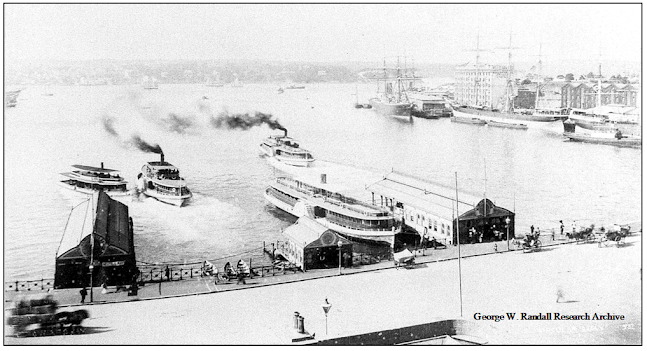


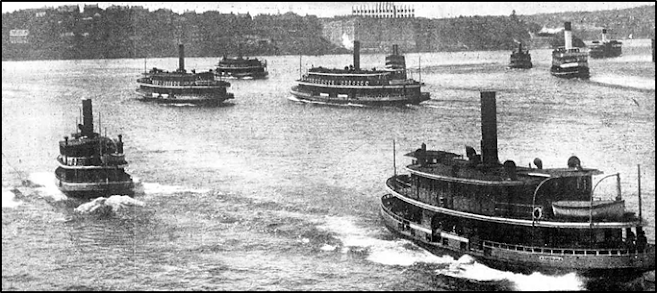

















































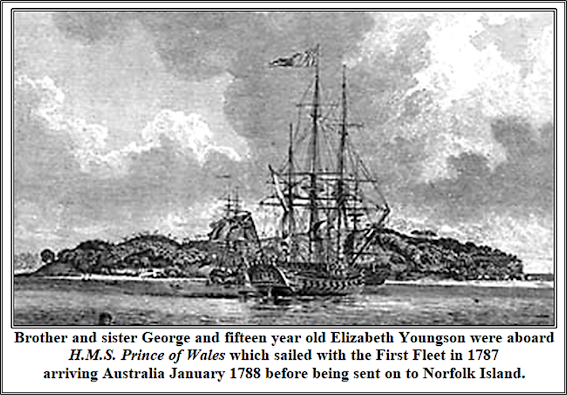














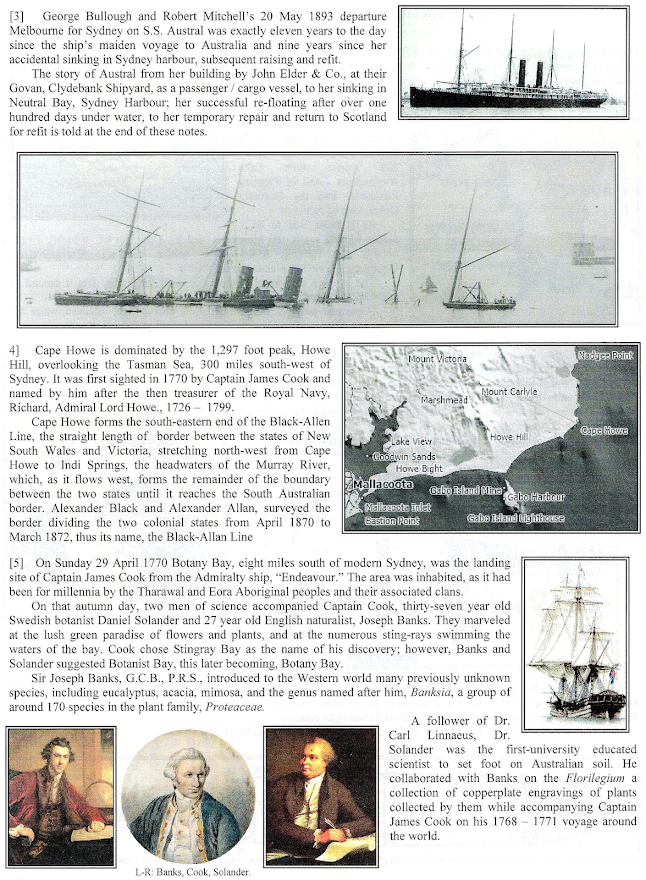








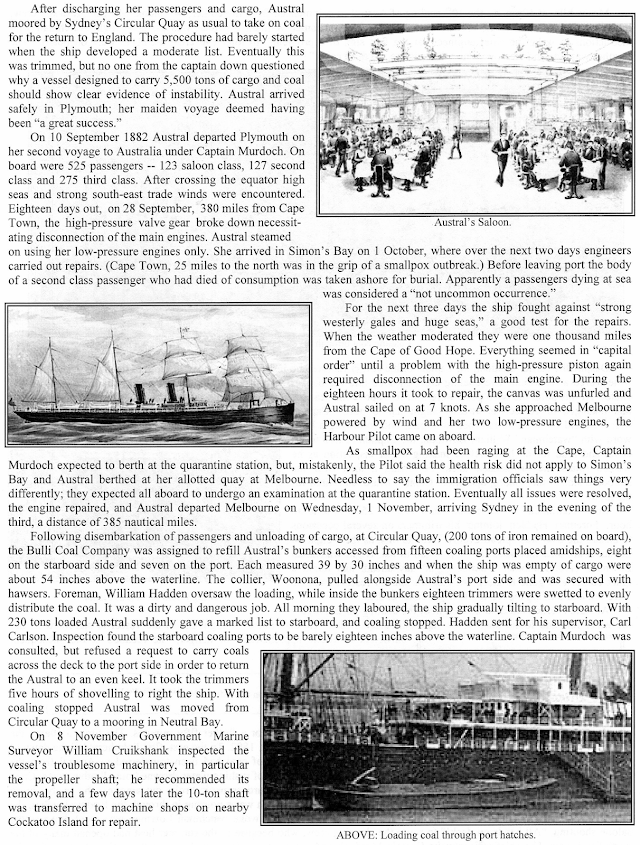







No comments:
Post a Comment